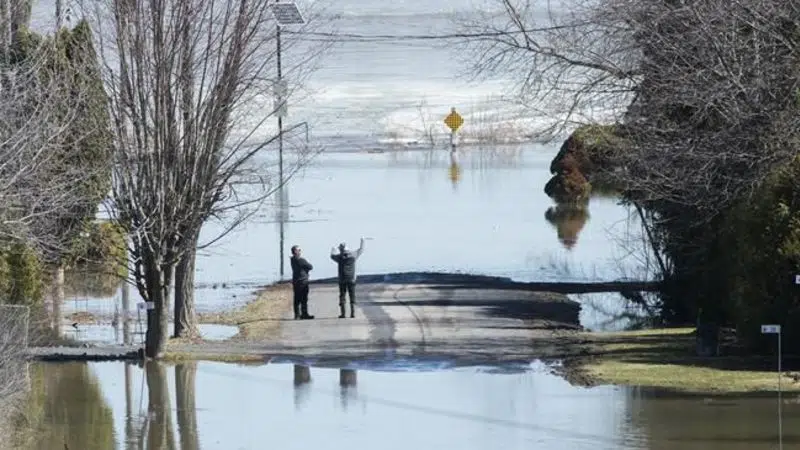
Residents eye rising waters as Legault says new approach needed to flood relief
MONTREAL — Some 800 Canadian military personnel fanned out across Quebec on Monday, filling sandbags and aiding evacuations as Premier Francois Legault warned that climate change will increase the frequency of serious flooding.
In Rigaud, about 70 kilometres west of Montreal, naval reservists used flat-bottomed Zodiac boats to survey the situation in low-lying areas, where the river had spilled across roads and blocked access to all but the largest of Canadian Forces vehicles.
As one boat motored on the Rigaud River past chunks of ice and floating debris off the shores of what is usually a scenic neighbourhood, the reservists waved to people sitting on the porches of their now-isolated homes.


